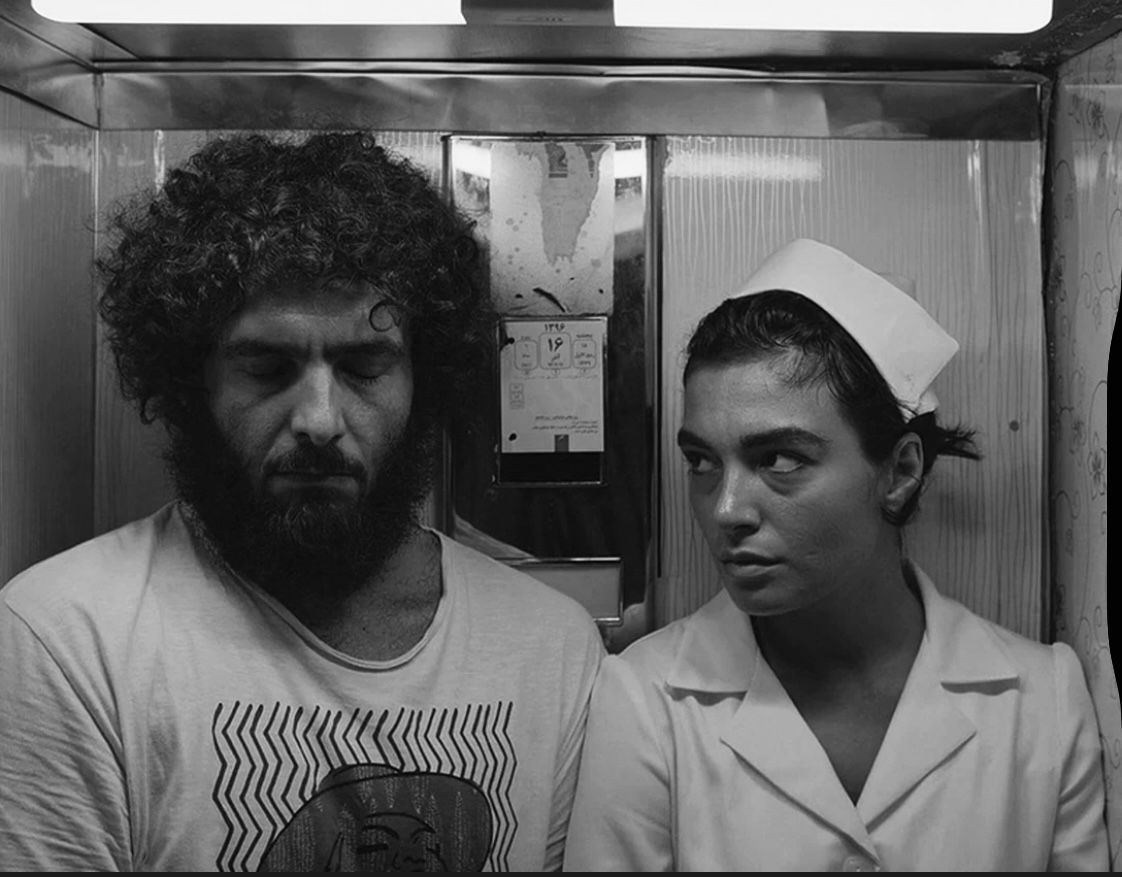
Rebels with a Camera: Critical Zones and the Aesthetics of Iran’s Underground Cinema
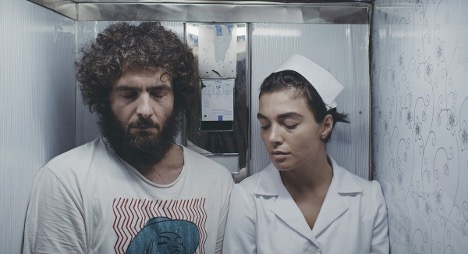
Figure 1: A still from the film Critical Zone (Mantaqah-yi Buhrānī), directed by ‛Alī Ahmadzādah, 2023.
Since the 1979 Islamic Revolution, the term “underground art” in Iran has been widely used but is sometimes misapplied. As I explain in Alternative Iran: Contemporary Art and Critical Spatial Practice (2022), some projects commonly labeled as “underground” were actually produced with official approval from the Ministry of Culture and Islamic Guidance and/or other state agencies. This was particularly common during certain political periods, such as parts of President Muhammad Khātamī’s term (1997–2005), the early years of Mahmūd Ahmadīnizhād’s presidency (2005–2013), and much of Hasan Rūhānī’s administration (2013–2021), when cultural restrictions were inconsistently enforced. In fields ranging from theater and music to visual and performance art, artists often used informal venues to avoid state oversight; but these actions were usually negotiated rather than openly defiant.
Nonetheless, cinema occupies a distinct and considerably more precarious cultural terrain in Iran. Because films circulate widely both within the country and across international borders, they have long been subjected to some of the most punitive forms of censorship imposed by the Islamic Republic, far more so than ephemeral or site-specific practices such as experimental theater or performance art. Unauthorized filmmaking in Iran (defined by its refusal to align with state-sanctioned cultural and political narratives) has long operated outside official licensing and funding, often at significant personal risk. It is therefore best understood as underground cinema, a term that denotes not just hidden venues or lack of permits, but a mode of production that shapes oppositional style, narrative form, circulation, and archiving. As Parviz Jahed notes in “Iranian Underground Cinema” (2014), this practice is less a countercultural phenomenon than a political act of civil disobedience.1Parviz Jahed, “Underground Cinema in Iran,” Film International 12, no. 3 (Sept. 2014): 106–111. It is produced entirely outside the state’s systems of licensing and support, often under precarious conditions, and typically addresses taboo subjects such as gender nonconformity or state violence.2Parviz Jahed, “Underground Cinema in Iran,” Film International 12, no. 3 (Sept. 2014): 106–111. Due to their sensitive content, these films follow unconventional archival and distribution paths. They rarely circulate through official channels in Iran and instead reach audiences internationally through film festivals, pirated DVDs, USB drives, or encrypted online platforms.3Parviz Jahed, “Underground Cinema in Iran,” Film International 12, no. 3 (Sept. 2014): 106–111.
Since the 1980s, the act of viewing banned films has itself given rise to a clandestine spectatorship that has become foundational to what we now recognize as Iranian underground cinema. As Blake Atwood details in Underground: The Secret Life of Videocassettes in Iran (2021), bootleg video circulation emerged during this period as a quiet yet widespread form of civil disobedience. Through the everyday acts of copying, distributing, and privately screening banned films, often Hollywood or arthouse titles, Iranians cultivated alternative cinematic imaginaries and created a vibrant, informal media ecology. These practices laid the groundwork for new viewing publics and future filmmakers, revealing how spectatorship itself could become a subversive force in a tightly controlled cultural environment.
This underground viewing culture was paralleled by equally subversive efforts in archiving. Ehsan Khoshbakht’s article “Celluloid Counter-Revolution: A Salute to the Underground Film Lovers of Iran” (The Guardian, 2023) offers a striking example in the figure of Ahmad Jurqāniyān.4Ehsan Khoshbakht, “Celluloid Counter-Revolution: A Salute to the Underground Film Lovers of Iran,” The Guardian, October 4, 2023, https://www.theguardian.com/film/2023/oct/04/celluloid-counter-revolution-a-salute-to-the-underground-film-lovers-of-iran. A pre-revolutionary cinephile turned film preservationist, Jurqāniyān risked arrest and torture to salvage thousands of 35mm prints destined for destruction by the Islamic Republic.5Ehsan Khoshbakht, “Celluloid Counter-Revolution: A Salute to the Underground Film Lovers of Iran,” The Guardian, October 4, 2023, https://www.theguardian.com/film/2023/oct/04/celluloid-counter-revolution-a-salute-to-the-underground-film-lovers-of-iran. Operating secret vaults in the basements of Tehran, he smuggled, stored, and eventually loaned out banned films to private gatherings.6Ehsan Khoshbakht, “Celluloid Counter-Revolution: A Salute to the Underground Film Lovers of Iran,” The Guardian, October 4, 2023, https://www.theguardian.com/film/2023/oct/04/celluloid-counter-revolution-a-salute-to-the-underground-film-lovers-of-iran. His personal archive became a site of cultural resistance, sustaining a lineage of cinematic memory that the state sought to erase.7Ehsan Khoshbakht, “Celluloid Counter-Revolution: A Salute to the Underground Film Lovers of Iran,” The Guardian, October 4, 2023, https://www.theguardian.com/film/2023/oct/04/celluloid-counter-revolution-a-salute-to-the-underground-film-lovers-of-iran. These acts of preservation were not merely about saving film stock; they were about safeguarding access to alternative worlds and histories.
Underground filmmaking is defined not only by its covert circulation but by a cinematic mode that compels viewers to confront what is not meant to be seen. This dynamic, however, is not limited to unapproved films; as many scholars note, the Islamic Republic’s restrictions on public behavior have shaped all genres of Iranian cinema since 1979. Censorship in post-revolutionary Iran has not simply restricted filmmakers but shaped distinctive aesthetic and narrative strategies.8Negar Mottahedeh, Displaced Allegories: Post–Revolutionary Iranian Cinema (Durham & London, Duke University Press, 2008). Negar Mottahedeh argues that modesty codes, such as the requirement for women to be veiled and the prohibition of the desiring gaze, forced filmmakers to reinvent cinematic language through allegory, indirection, and visual restraint.9Negar Mottahedeh, Displaced Allegories: Post–Revolutionary Iranian Cinema (Durham & London, Duke University Press, 2008). According to Hamid Naficy, post-revolutionary Iranian cinema renders even the most private spaces (such as bedrooms and bathrooms) subject to public scrutiny, placing them under the same moral surveillance as public places. This heightened visibility enforces strict limits on depictions of intimacy, structured by what Naficy calls the “Islamicate gaze,” a visual regime that presumes a male spectator from whom women must remain modestly concealed, both physically and symbolically.10Hamid Naficy, A Social History of Iranian Cinema, Volume 3: The Islamicate Period, 1978–1984 (Durham: Duke University Press, 2011), 115-188. Hamid Dabashi, on the other hand, describes the result as cinema populated by “body-less faces” and the systematic “abstracting [of] women,” highlighting the disembodiment that characterizes representations of femininity under such constraints.11Hamid Dabashi, “Body‐Less Faces: Mutilating Modernity and Abstracting Women in an “Islamic Cinema,” Visual Anthropology 10, nos. 2-4 (1998): 361–380. Together, these and similar theories highlight how state-imposed restrictions have fostered distinctive aesthetic strategies unique to authorized Iranian cinema.12These include, among others, the work and contributions of Michelle Langford. See, Michelle Langford, Allegory in Iranian Cinema: The Aesthetics of Poetry and Resistance (London Borough: Bloomsbury Publishing, 2019).
***
Building on the work of these film scholars, this essay examines how a different set of constraints has shaped the aesthetics of underground filmmaking in Iran. Consider the work of Muhammad Rasūluf, a renowned Iranian filmmaker who has long been persecuted for his politically charged cinema. In May 2024, after his film The Seed of the Sacred Fig (Dānah-yi Anjīr-i Ma‛ābid) was selected for competition at Cannes, Rasūluf was sentenced by Iranian authorities to eight years in prison, along with flogging, a fine, and the confiscation of his assets.13Scott Roxborough, “How Mohammad Rasoulof Escaped Iran and Why He Will Continue Fighting,” The Hollywood Reporter, May 24, 2024. Accessed May 25, 2024. https://www.hollywoodreporter.com/movies/movie-news/mohammad-rasoulof-iran-cannes2024-seed-of-the-sacred-fig-1235907934/ Refusing to comply with demands to withdraw the film, he fled Iran clandestinely by crossing mountainous terrain to reach Europe, where he now lives in exile.14Scott Roxborough, “How Mohammad Rasoulof Escaped Iran and Why He Will Continue Fighting,” The Hollywood Reporter, May 24, 2024. Accessed May 25, 2024. https://www.hollywoodreporter.com/movies/movie-news/mohammad-rasoulof-iran-cannes2024-seed-of-the-sacred-fig-1235907934/
The Seed of the Sacred Fig, Rasūluf’s tenth directorial work, was shot covertly in Tehran and its surrounding regions.15Michael Rosser, “Mohammad Rasoulof Talks Fleeing Iran and Making Cannes Competition Title The Seed of the Sacred Fig,” Screen Daily, May 23, 2024. https://www.screendaily.com/features/mohammad-rasoulof-talks-fleeing-iran-and-making-cannes-competition-title-the-seed-of-the-sacred-fig/5193960.article. Filming lasted approximately seventy days, from late December 2023 to March 2024, though production was frequently interrupted; Rasūluf could only shoot for a few days at a time before being forced to pause for safety.16Michael Rosser, “Mohammad Rasoulof Talks Fleeing Iran and Making Cannes Competition Title The Seed of the Sacred Fig,” Screen Daily, May 23, 2024. https://www.screendaily.com/features/mohammad-rasoulof-talks-fleeing-iran-and-making-cannes-competition-title-the-seed-of-the-sacred-fig/5193960.article. What’s more, the film blurs the boundary between fiction and documentary; it follows a fictional family while incorporating real footage from the 2022 Woman, Life, Freedom protests to powerful effect.
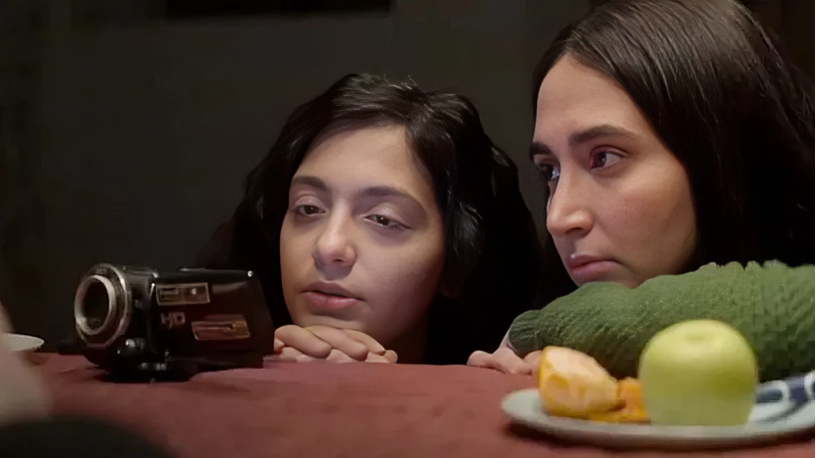
Figure 2: A still from the film The Seed of the Sacred Fig (Dānah-yi Anjīr-i Ma‛ābid), directed by Muhammad Rasūluf, 2024.
The film’s aesthetics are shaped by its constraints: Limited casts and restricted settings, often confined to the interiors of homes, cars, abandoned buildings, or other enclosed or uninhibited spaces, create an intimate visual language. These are, indeed, critical zones: vital for safeguarding cast and crew and central to the aesthetic language and spatial politics of underground films. The camera often uses close-up shots, emphasizing facial expressions, objects, and textures to convey emotion and advance the story (Figure 2). These details become crucial devices through which the underground filmmakers convey meaning and evoke feeling.
***
Beyond widely known figures, such as Rasūluf, a younger generation of directors has emerged, producing films entirely without permits, budgets, or institutional protection. Their work, shaped by scarcity and improvisation, embraces small casts, intimate spaces, raw sound, and non-linear plots. These constraints do not diminish the cinematic experience; instead, they give rise to an aesthetic of urgency, fragmentation, and defiance. Striking in the work of Iran’s younger underground filmmakers is their focus on taboo subjects rooted in their generation’s daily life. These themes often fall afoul of both the Islamic Republic’s strict moral codes and sometimes even the expectations of global audiences, making them doubly marginalized and underexamined. ‛Alī Ahmadzādah (whose films I discuss below) told me that many international critics initially dismissed Critical Zone (Mantaqah-yi Buhrānī, 2023) for its depictions of drug use among Iranian youth. After the Woman, Life, Freedom uprising, however, the film drew renewed attention amid global focus on youth-led resistance in Iran. Ahmadzādah’s work reveals not only the critical zones of underground filmmaking but also the hidden tensions within youth cultures, often visible yet overlooked. Though seemingly freer from institutional control, underground films remain bound by their own risks, which shape their narrative and visual styles, particularly in depictions of middle- and upper-class youth in contemporary Tehran.
When I refer to “youth culture” in the context of Iranian underground cinema, I am speaking broadly, encompassing not just teenagers and high school students, but also individuals in their twenties and even early to mid-thirties. This might seem surprising to readers unfamiliar with the Iranian context, particularly those accustomed to Western portrayals of youth in classic films like Rebel Without a Cause (1955), where the protagonists are mainly depicted as being in their late teens. In Iran, however, due to prolonged economic hardship and social constraints, the phase of youth is often extended. Many individuals remain financially dependent on their families well into adulthood, unable to marry, purchase homes, or establish independent lives. This is especially true for those in professions with unstable incomes and for individuals who have the support of their families. As a result, the experience of youth (marked by bachelor apartments, dependence on family support, late-night parties, and long drives to northern resorts with friends) often stretches into one’s thirties. In the (underground) films of Iranian director ‛Alī Ahmadzādah (b. 1986), which I examine in the following sections, both the characters and the actors portraying them are often in their late twenties or thirties. This reflects a social reality in Iran, where youth is not just a matter of age, but a prolonged condition shaped by economic stagnation, delayed life transitions, and at times even psychological malaise and substance use.
Working with minimal resources and under constant threat of surveillance, underground films with a focus on “youth culture,” adopt fragmented structures, spatial and temporal dislocation, and confined settings to construct visual and narrative languages attuned to the fractured realities of life under authoritarian rule. In particular, these films highlight the emotional aspects of youth experience (boredom, anxiety, disorientation, and short-lived moments of joy), while depicting the social realities of life on the margins. In this way, Iranian underground cinema develops a formal language in which aesthetic and narrative choices are shaped by, and respond to, the constraints of everyday life.
***
Some scholars have recently criticized what they see as an overemphasis on censorship, and on resistance to it (even in purely aesthetic form), in analyses of Iranian cinema. For example, emerging scholar Hamed Taheri, argues that many discussions, across media, festivals, reviews, and academia, tend to frame Iranian films too narrowly through the lens of resistance to censorship.17Hamed Taheri, “Compliance and Resistance in Iranian Cinema’s Censorship Landscape: A New Approach to Analyzing Iranian Films,” Quarterly Review of Film and Video (2024): 1–19. While acknowledging the valuable work of scholars who have addressed this theme, he cautions that such interpretations “do not explain how filmmakers could have performed their perceived resistance or circumvented censorship in different phases.”18Hamed Taheri, “Compliance and Resistance in Iranian Cinema’s Censorship Landscape: A New Approach to Analyzing Iranian Films,” Quarterly Review of Film and Video (2024): 1–19. These readings, according to Taheri, risk oversimplifying the complex processes of filmmaking, distribution, and audience reception by reducing them to isolated acts of resistance.19Hamed Taheri, “Compliance and Resistance in Iranian Cinema’s Censorship Landscape: A New Approach to Analyzing Iranian Films,” Quarterly Review of Film and Video (2024): 1–19. He terms this tendency the “fetishization of resistance” and calls instead for a more nuanced, contextual approach, one that accounts for both acts of resistance and the ways in which the Islamic Republic actually injects its ideology into cinema through mechanisms of control and regulation.20Hamed Taheri, “Compliance and Resistance in Iranian Cinema’s Censorship Landscape: A New Approach to Analyzing Iranian Films,” Quarterly Review of Film and Video (2024): 1–19. However, I argue that many Iran-based filmmakers are, in fact, influenced by how scholars, particularly in mainstream Western books and media, have theorized their work and that of their peers. This is especially true for filmmakers in recent decades, who have had ample access to such forms of writing and scholarship. Indeed, the relationship is more than a one-way street; it is reciprocal. Regardless of this detail, I share Taheri’s concerns and acknowledge that in my earlier work on Iranian alternative and underground art, I have been careful not to “romanticize” resistance or rely on visual clichés or superficial observations without first verifying them with the artist or others involved in the project. I have focused on the specific conditions under which creative works are produced and shown: whether they have state approval, whether they are intended to be explicitly political, whether they deliberately navigate or bypass state censorship, and whether the creator faced repercussions for that particular work. To avoid generalizations, I often speak directly with the creators. In this case, I have interviewed Ahmadzādah extensively, especially about Critical Zone and its production. Ahmadzādah, however, has a distinctly liberal disposition. Like many artists, he believes that explanations need not come directly from him; instead, he is genuinely curious about what viewers discover and prefers to leave interpretation open. In our interview, he often withheld elaboration, his expression at times suggested: What do you think? This openness allowed me to project my own interpretations: I argue that the narrative and visual strategies shaped by underground constraints in Ahmadzādah’s work carry into his sanctioned films, reflecting not merely subversion but a practice honed through years of permitless filmmaking as well as Tehran’s culture of ambiguity, uncertainty, and coded youth expression.
Although Ahmadzādah has lived and worked both inside and outside Iran since 2023, this discussion centers on the three feature-length films he directed while based in the country: works that trace the contours of a generation aging into delayed adulthood under the shadow of surveillance and sanctioned social norms. Two of his earlier features –Kami’s Party (Mihmūnī-i Kāmī, 2013) and Atomic Heart (Mādar-i Qalb-i Atumī, 2015)– rely on a shared visual and narrative grammar shaped by endless driving and the intimate architecture of cars. Faces are captured in shallow focus, illuminated by the dim light filtering through car windows or the glow of dashboard fluorescence during nighttime driving scenes. Conversations drift. The camera lingers on confined car interiors, dead-end allies, roadsides, backrooms, lavatory counters: spaces where desire, paranoia, and boredom blend (Figure 3).
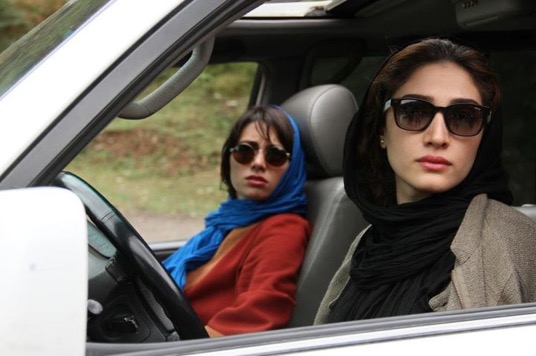
Figure 3: A still from the film Kami’s Party (Mihmūnī-i Kāmī), directed by ‛Alī Ahmadzādah, 2013.
Ahmadzādah’s films diverge from other examples of Iranian (underground) youth cinema, such as My Tehran for Sale (2009), directed by Grānāz Mūssavī, which centers on joyful gatherings and moments of transgressive celebration. Mūssavī’s approach came with real-world consequences: While she returned to Australia after shooting the film, Iranian actress Marziyah Vafāmihr was arrested in 2011 for her role, reportedly due to appearing without proper hijab and participating in scenes deemed inappropriate by authorities. She was initially sentenced to one year in prison and 90 lashes, though the sentence was later reduced.21Tim Kenneally, “Iranian Actress Freed from Prison on Reduced Sentence,” Reuters, October 28, 2011. https://www.reuters.com/article/lifestyle/iranian-actress-freed-from-prison-on-reduced-sentence-idUSTRE79R6JM/.
In Ahmadzādah’s portrayal of youth leisure (something even implied by the title Kami’s Party), what we encounter is far from parties, celebrations, or carefree singing and dancing. There is often the hope of reaching a fun destination or simply returning home from a gathering, but the journey becomes increasingly fraught. The characters face constant disruptions, from reckless drivers speeding toward them on narrow roads to encounters with police and morality patrols. The focus is less on moments of relaxation or enjoyment and more on the obstacles that interrupt and ultimately define everyday life. Even drug use, while probably legible to most viewers, is rarely shown directly. It comes across less as an act of pleasure than as something driven by boredom, desperation, habit, or accident. The characters’ incessant laughter leaves us unsure whether it stems from intoxication or from the stress of the moment, tinged with the recognition of its absurdity. This absence of “fun” is likely not just a tactical avoidance of censorship but a deliberate aesthetic choice. Rather than portraying youth as rebellious through spectacle, Ahmadzādah emphasizes the emotional and existential uncertainty that defines their lives under constant constraint. Specifically, Kami’s Party draws attention not to the moments when youth break free, but to the conditions that prevent them from ever fully doing so.
Kami’s Party was produced entirely underground and never screened in Iran.22Interview with Ahmadzādah, July 2025. Atomic Heart, by contrast, followed a more complex path in both production and release. Although it was filmed with partial authorization from cultural authorities, it was not approved for screening in Iran until four years after its completion, and even then, it was pulled from theaters after just two weeks due to shifting regulations and official backlash.23Interview with Ahmadzādah, July 2025. For these reasons, I consider Atomic Heart, alongside Ahmadzādah’s other underground films, Kami’s Party and Critical Zone (discussed at the end of this essay), as part of a continuum of Iranian underground cinema, one shaped by shared constraints in cinematography, location, and production, regardless of official permissions.
***
In Kami’s Party, a group of young, middle- and upper-class Iranians shuttle between the northern shores of the Caspian Sea and the exclusive villa enclave of Lavāsān near Tehran. The film’s narrative, seemingly simple, follows Nigīn (Mīnā Sādātī) and her friend Farnāz (Pigāh Āhangarānī) as they drive inland to attend a party hosted by an enigmatic man named Kāmī, after losing touch with Nigīn’s boyfriend Umīd. But the journey becomes psychologically fraught, and ultimately tragic. Shot mostly over the course of a single, extended day (perhaps a Friday, the day of rest and leisure in Iran) the film unfolds slowly and subtly. The cinematography relies on tight interior shots and low lighting, with occasional wider frames set in roadside cafés or wooded areas. These outdoor scenes, often obscured by northern Iran’s heavy fog, create a subdued and unsettling atmosphere (Figure 4). These unclear and shifting spaces are central to underground filmmaking, where small crews work quietly, often filming in public or semi-public areas while avoiding attention.

Figure 4: A still from the film Kami’s Party (Mihmūnī-i Kāmī), directed by ‛Alī Ahmadzādah, 2013.
What initially appears to be a weekend escape turns inward, unraveling hidden tensions between friends and lovers. The film’s climax unfolds with the discovery of Umīd’s corpse, apparently dead of an overdose and hidden in the trunk of Nigīn’s car. This revelation is immediately followed by a sudden accident, as another partygoer, groggy and half-asleep at the wheel, unknowingly runs over the very friend who had earlier joined Nigīn and Farnāz on their way to Kāmī’s party in Lavāsān, and who unexpectedly uncovered Umīd’s body in the trunk. This final, elliptical moment occurs with no warning or resolution. The secret remains unspoken, reabsorbed into the flow of traffic and time.
Ahmadzādah himself has described Kami’s Party as a portrait of Iran’s affluent youth, deliberately free from overt judgment or ideology.24“Kami’s Party.” Iranian Film Festival, Cologne, https://www.iranian-filmfestival.com/en/kamis-party/. Instead, the film speaks through its form: long takes, silent exchanges, cars moving endlessly between private enclaves. The road movie, in Ahmadzādah’s hands, becomes not a journey of discovery but of concealment, an aesthetic strategy suited to a context where the unsaid often carries more weight than what can be openly acknowledged.25“Kami’s Party.” Iranian Film Festival, Cologne, https://www.iranian-filmfestival.com/en/kamis-party/.
Atomic Heart, also known as Atom Heart Mother, was produced in Iran with permission from the authorities in 2013 and screened at the 65th Berlin International Film Festival in 2015. It went on to be nominated at the Buenos Aires International Festival of Independent Cinema, the LA Film Festival, the Odesa International Film Festival, and screened at both the San Diego Asian Film Festival and the Zurich Film Festival.26“‘Atomic Heart’ on Screen After 4-Year Delay,” Financial Tribune, May 29, 2017, http://elearning.khzceo.ir/articles/art-and-culture/65474/atomic-heart-on-screen-after-4-year-delay; “Atomic Heart Mother (2015) – Awards.” IMDb, https://www.imdb.com/title/tt3719158/awards/. Although filmed with official permission, the film was not approved for public screening in Iran until 2017, after the Ministry of Culture and Islamic Guidance required certain edits.27Interview with Ahmadzādah, July 2025. According to Ahmadzādah, however, even then the film was screened in Iran for only two weeks before being pulled due to new regulations and mounting accusations.28Interview with Ahmadzādah, July 2025. The title references a Pink Floyd song that is banned yet widely popular in Iran. The film is also grounded in the political climate of the early 2010s, particularly during the rollout of Mahmūd Ahmadīnizhād’s “Subsidy Reform Plan” and the intensification of Iran’s atomic energy program.29Associated Press editorial, “Iran Doubles the Price of Bread with Subsidy Cut: Bread Prices Double in Iran as Government Slashes Subsidies with Economic ‘Surgery’ Plan,” Yahoo! Finance, December 20, 2010, https://web.archive.org/web/20101224163603/http://finance.yahoo.com/news/Iran-doubles-the-price-of-apf-1408949862.html?x=0. Set over the course of a single night, it follows two friends, Ārīnah and Nubahār, as they drift through Tehran’s streets after midnight, encountering a series of increasingly surreal and ominous events.
As they navigate the city by night, Ārīnah and Nubahār are drawn into a surreal odyssey after a car accident leads to the unexpected arrival of a mysterious man named Tūfān. What follows is an oneiric sequence of events that seems to hover between dream and hallucination. The cinematography becomes increasingly stylized (teal-tinged city lights, claustrophobic framing, tracking shots that blur into abstraction) mirroring the characters’ growing disorientation. Here, too, the car remains the central site of narrative and aesthetic focus: a mobile bubble of freedom and fear, desire and dread. The streets of Tehran are glimpsed in passing but never truly inhabited; the protagonists remain in motion, yet their ride leads nowhere. One exception arises when they detour to a church in Tehran, an ambiguous refuge linked to Ārīnah’s Armenian identity and her access to the space, ostensibly to play the piano and use its facilities, but also to momentarily escape the unwelcome presence of Tūfān, who appears to be stalking them. In this scene, the church becomes more than just a sanctuary (Figure 5); it gestures toward a broader phenomenon in Tehran, where spaces belonging to minority communities (halls and spaces adjacent to churches, synagogues, and Zoroastrian community centers) have long been informally appropriated by Muslim youth as safe zones for underground cultural activity, especially the often-banned Rock music.30Pamela Karimi, Alternative Iran: Contemporary Art and Critical Spatial Practice (Stanford University Press, 2022), 46-52. The film’s subtle invocation of this practice underscores these spaces as hidden sanctuaries for creative expression while simultaneously situating them as another “critical zone” within both Tehran’s underground culture and the aesthetics of underground filmmaking.
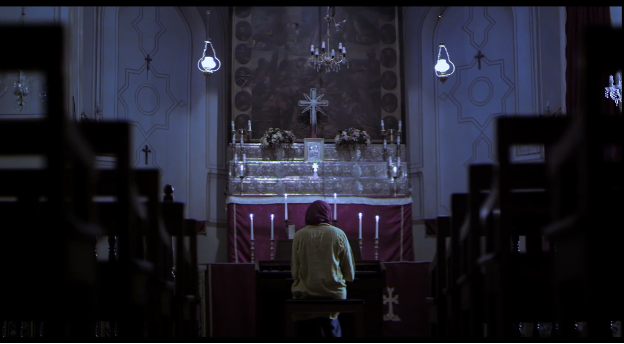
Figure 5: A still from the film Atomic Heart (Mādar-i Qalb-i Atumī), directed by ‛Alī Ahmadzādah, 2015.
As the night progresses, the girls’ encounters with figures of state authority: police officers, seemingly intelligence agents, and even an Arabic-speaking man who bears a startling resemblance to Saddam Hussein, become increasingly surreal and ominous. At one point, when a morality officer engages with the girls, a casual remark about having watched the Hollywood film Argo (which dramatizes a CIA rescue mission during the 1979 Iran hostage crisis), quickly escalates into an intense interrogation. Even something as trivial as a pair of sunglasses worn at night by their friend Kāmī, who briefly joins them on the roadside, arouses suspicion. But even in moments of calm or fleeting happiness, when no one interrupts or interrogates, the trio is still shown against a backdrop of anxiety. Their casual conversations about life abroad and a spontaneous sing-along to the 1985 charity single “We Are the World” take place against a backdrop of flashing motorcycle lights, which suggest they might be being followed. As “We Are the World” reaches its climax, the scene abruptly cuts to a car crash at an intersection, ending the brief moment of enjoyment (Figure 6).
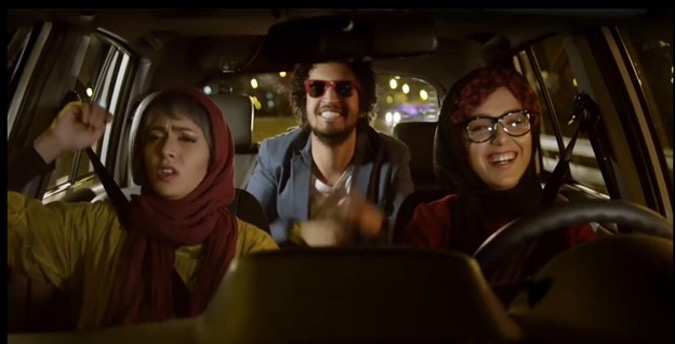
Figure 6: A still from the film Atomic Heart (Mādar-i Qalb-i Atumī), directed by ‛Alī Ahmadzādah, 2015.
The film features masterful performances by some of Iran’s most prominent mainstream actors (Tarānah ‛Alīdūstī, Pigāh Āhangarānī, and Muhammad Rizā Gulzār) whose collaboration on this unconventional project is surprising, yet not entirely unexpected. Their performances convincingly capture the everyday absurdities of life under authoritarianism, where even mundane aspects of daily life are subject to suspicion. The film takes a surreal turn at the end when Tūfān (a character who is possibly coded as an undercover agent) dies in what appears to be a suicide, following a bizarre bet with Ārīnah about who will jump off a rooftop in Tehran. This moment leaves the narrative unresolved. Like Kami’s Party, Atomic Heart offers no conclusion: only a glimpse into a life looped in repetition.
***
Both Kami’s Party and Atomic Heart end without catharsis. Yet in their inconclusiveness, they gesture to something enduring: the persistence of youth as a temporality beyond state scripting. These are lives lived in stasis, but not without movement: forever in cars, en route to parties, chasing moments of autonomy however fleeting. Ahmadzādah’s characters seek refuge from the traditional family structures that demand conformity through marriage, reproduction, and respectable employment. Instead, they linger in an extended adolescence: social smoking, listening to Western music, drifting from one night to the next. These may be small acts of defiance, but within the Islamic Republic’s legal and moral framework, they carry important weight.
Ahmadzādah’s work offers a portrait of post-revolutionary Iranian youth, particularly the generation shaped by the long tail of the Green Movement and the crushing effects of international sanctions. This is a generation whose desires (for leisure, companionship, and privacy) are modest yet continually deferred. It is also the same generation that has had to grapple with the implications of Iran’s nuclear policy, particularly since the onset of Mahmūd Ahmadīnizhād’s presidency. In Atomic Heart, references to atomic bombs and other instruments of mass destruction surface intermittently, often woven into descriptions of melancholic dreams and fragmented exchanges between Ārīnah, Nubahār, and Kāmī. The aesthetic choices in these films (the tight confines of car interiors, the ambient glow of night driving, the absence of narrative resolution) mirror the social impasse that defines their lives. There is no outside, no escape, only motion without arrival.

Figure 7: A still from the film Atomic Heart (Mādar-i Qalb-i Atumī), directed by ‛Alī Ahmadzādah, 2015.
And yet, this suspended world begins to crack in Ahmadzādah’s third long film, produced amid the rising tide of protests led by Iranian youth. If Kami’s Party and Atomic Heart capture the eerie stillness of repression, his most recent cinematic turn gestures toward the possibility that this generational loop might at last be breaking.
Filmed clandestinely in Tehran in 2019 and completed only in 2023 through international postproduction efforts involving collaborators in Germany and Portugal, Ahmadzādah’s Critical Zone (2023), is a guerrilla-style tour de force that, in my view, captures the aesthetic and political power of Iran’s underground cinema at its best. Shot covertly on the streets of Tehran and completed without state approval, Critical Zone captures both the risks and the radical imagination that define this cinematic movement. Critical Zone exemplifies the best of underground cinema in Iran, defined by its clandestine production and its voicing of marginalized experiences absent from both state and independent films.31The majority of the content presented here related to the film, Critical Zone, is a paraphrased and revised adaptation of a section originally published in my book, Women, Art, Freedom: Artists and Street Politics in Iran (Leuven University Press/Cornell University Press, 2024). For the original content, please refer to pages 242–246. The discussions of this film took shape following extensive interviews with ‛Alī Ahmadzādah in November 2023 in Mannheim, Germany, after a screening of his film. I am grateful to him for generously sharing insights into his filmmaking process and the details of Critical Zone with me. Premiering at the 76th Locarno Film Festival early in 2023, Critical Zone won the prestigious Golden Leopard, though Ahmadzādah was prohibited from leaving Iran and attending the screening.
***
Like many others on social media, I first encountered Critical Zone through a viral GIF that became iconic during the 2022–2023 protests. The clip shows a woman standing through the sunroof of a moving car on a Tehran highway, her hair swept by the wind as she defiantly shouts “F… You” into the night (Figure 8). Widely mistaken for spontaneous protest footage, the scene circulated as a symbol of the Woman, Life, Freedom uprising. Only later did I realize that this striking moment was not documentary but a carefully staged scene from ‛Alī Ahmadzādah’s Critical Zone, which he had posted on Instagram ahead of the film’s release.32Interview with Ahmadzādah, November 2023. That pre-release circulation drew the attention, and condemnation, of Iranian authorities.
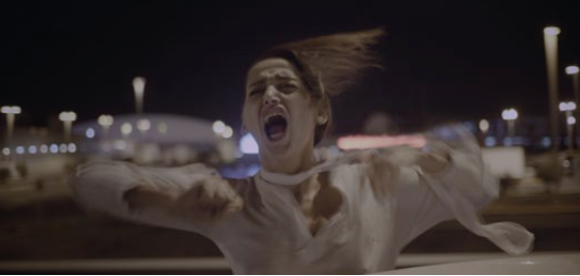
Figure 8: A still from the film Critical Zone (Mantaqah-yi Buhrānī), directed by ‛Alī Ahmadzādah, 2023.
Ahmadzādah, long officially barred from filmmaking by the Islamic Republic, took on nearly every production role himself: direction, editing, sound design, and even acting in several scenes. Working with a skeletal crew of close friends he converted his own apartment into both a production hub and the film’s principal set. With no permits, the film relied heavily on concealed cameras and a mobile shooting strategy that mirrored its protagonist’s elusive movements through Tehran’s layered urban geography. In addition to directing the film, Ahmadzādah personally handled the original sound design, montage, and editing. He even appeared on screen, playing roles in scenes where anonymous gangs pursue the drug-dealing protagonist. The cast was made up entirely of nonprofessional actors who participated out of friendship with the director, and the filmmaking crew was equally minimal: limited to a cameraman, a close friend of Ahmadzādah, and a sound technician. This small, close-knit team was instrumental in carrying out the shoot within Iran.
The film’s narrative follows Amīr, a solitary drug dealer navigating Tehran’s underbelly in a beat-up taxi, guided by a disembodied GPS voice. Along his route, Amīr encounters a cross-section of Iranian society: an elderly resident in a nursing home, a young nurse whose body language is suggestive, queer sex workers near Karīmkhān Bridge, a melancholic flight attendant, and a female dancer struggling for recognition (Figures 1 and 9). Each exchange Amīr makes, apparently transactional, is laden with emotional weight, unfolding as quiet acts of care, mutual recognition, and resistance against social and psychological confinement.
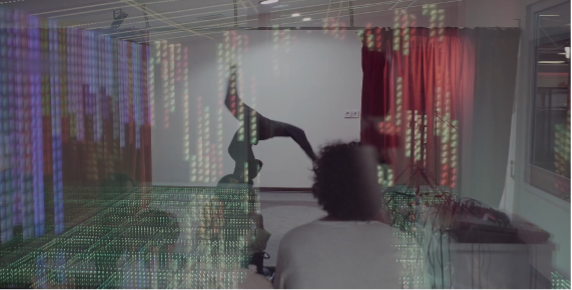
Figure 9: A still from the film Critical Zone (Mantaqah-yi Buhrānī), directed by ‛Alī Ahmadzādah, 2023.
Ahmadzādah’s background in architectural studies is evident in the film’s emphasis on spatial sensibilities.33Interview with Ahmadzādah, November 2023. Tehran is not just a backdrop but an oppressive force: its towers, cramped elevators, dark rooftops, concrete tunnels, highways, bridges, and narrow alleys form liminal zones where legality, identity, and morality blur (Figures 1 and 10). In the film’s opening sequence, a camera tracks an ambulance descending into a tunnel, only to reveal that it carries not patients, but what seem to be drugs and dealers, all suggesting the complicity of official actors in the very criminality they claim to suppress. The scene hints at the deeper metaphorical thrust of the film: Tehran as a city of surfaces and shadows, where truth circulates not through official narratives, but through whispered exchanges and passing gestures.
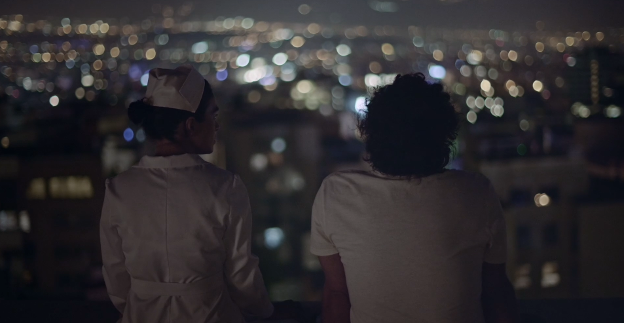
Figure 10: A still from the film Critical Zone (Mantaqah-yi Buhrānī), directed by ‛Alī Ahmadzādah, 2023.
Sound design plays a crucial role in the film’s affective resonance. Ahmadzādah recorded ambient noises (e.g., street fights, the murmur of stray cats, the tired groans of friends) and repurposed them across different scenes, crafting a soundscape that amplifies the psychological dissonance of urban life. A particularly poignant moment features Amīr distributing hash brownies to elderly residents in a nursing home, assisted by a flirtatious nurse; the scene, marked by a mix of surreal humor and melancholy, contrasts Iran’s aging, forgotten generation, those possibly responsible for the Islamic Revolution, with its disillusioned youth.
What emerges is a portrait of a society grappling with a deep existential fatigue. Ahmadzādah has remarked on the number of highly educated, creative young Iranians he knows who spend their days lying on sofas, numbed by a sense of hopelessness.34Interview with Ahmadzādah, November 2023. While Critical Zone may exaggerate the ubiquity of drug use, its underlying message is clear: a generation’s aspirations are being stifled by systemic neglect and authoritarian control. This sense of emotional and social stagnation, which is largely absent from both state-sponsored and officially sanctioned oppositional portrayals of Iranian life, is vividly expressed through the visual and auditory textures of Critical Zone.
The film offers a nuanced exploration of gender, as Ahmadzādah (who identifies as a feminist) depicts the Woman, Life, Freedom movement not as a sudden rupture but as the product of a long, arduous struggle, underscoring its ongoing rather than completed nature. As he notes, women have “often persisted where men have often faltered.”35Interview with Ahmadzādah, November 2023. In Critical Zone, while male protagonists are often quiet or appear passive, the female protagonists are portrayed as more outspoken and agentive. Moreover, the protagonist, Amīr, challenges conventional representations of masculinity. Portrayed as emotionally attuned and ambiguously gendered, he shares moments of gentle solidarity with queer and ostensibly transgender sex workers, gifting them marijuana and receiving their gratitude through quiet, tender gestures. These interactions challenge the strict binaries of gender and sexuality enforced by the Islamic regime, pointing instead to an ethics of care rooted in empathy rather than control or conformity.
The motif of the car, central to all Ahmadzādah’s films, is reimagined here not as a stage for offhand remarks, casual conversations among friends, or extended formal dialogue, as in the films of ‛Abbās Kiyārustamī (Ten, 2002) or Ja‛far Panāhī (Taxi; also known as Taxi Tehran, 2015), but as a mobile zone of quiet observation. Amīr listens more than he speaks. His silence, far from passive, serves as a counterpoint to the noise of ideological conformity and cultural censorship. Through this stillness, Critical Zone articulates what earlier generations of filmmakers often left unsaid (topics such as addiction, romantic urges, isolation, and despair) owing to both state censorship and prevailing social taboos.
***
Returning to the now-iconic image of the woman shouting through the car’s sunroof (Figure 8), it becomes clear that Critical Zone anticipated the revolutionary energies of the Woman, Life, Freedom uprising even before they erupted onto the global stage. The delay in the film’s release, due to production challenges, renders it what scholar Lisa Baraitser calls a deferred act of political becoming. It is precisely this deferral: its anticipation of a future uprising, that imbues the film with its radical temporal force. Critical Zone, like the other critical zones in Ahmadzādah’s films (and in much of Iranian underground cinema) captures a city in crisis while mapping the terrains of collective desire and creative resistance that persist, and at times even flourish, beneath repression.36Lisa Baraitser, Enduring Time (London: Bloomsbury Academic, 2017), 93.
Cite this article

Since the 1979 Islamic Revolution, Iran’s underground cinema (films produced without state authorization and often tackling taboo or politically sensitive themes) has developed distinctive aesthetic, narrative, and production strategies shaped by constraint. This essay shows how filmmakers such as ‛Alī Ahmadzādah navigate surveillance, restricted movement, censorship, and limited or irregular funding, conditions that have fostered a “critical zone” aesthetic: intimate settings (homes, cars, semi-public spaces), small casts and crews, fractured or suspended narratives, raw soundscapes, close-up and low-light cinematography, and a visual language of delay and unresolved movement. By examining Kami’s Party (2013), Atomic Heart (2015), , and most notably Critical Zone (2023), the article argues that restrictions have forged an aesthetic of defiance, one that also serves as an archive of collective discontent and precarious youth culture.



